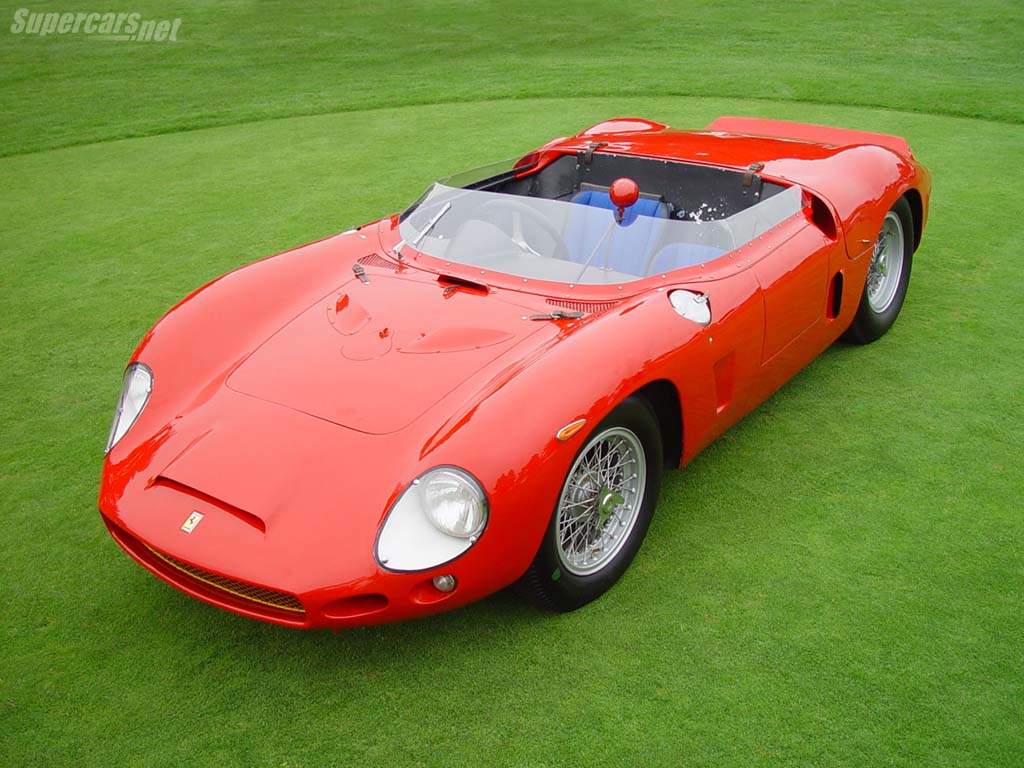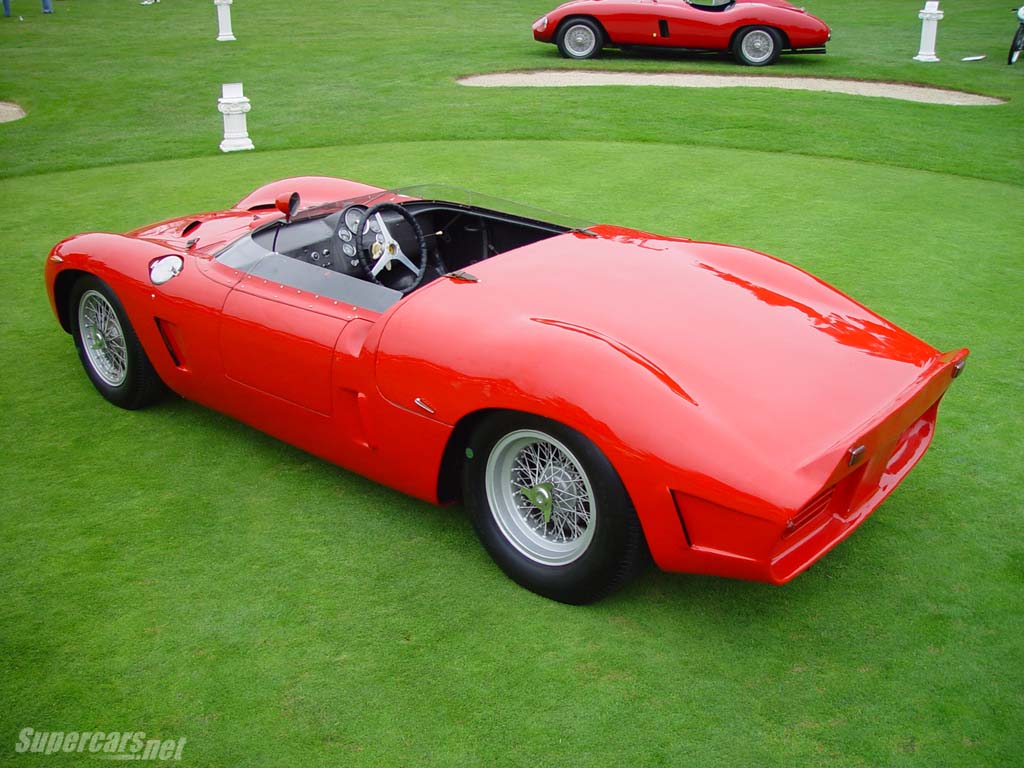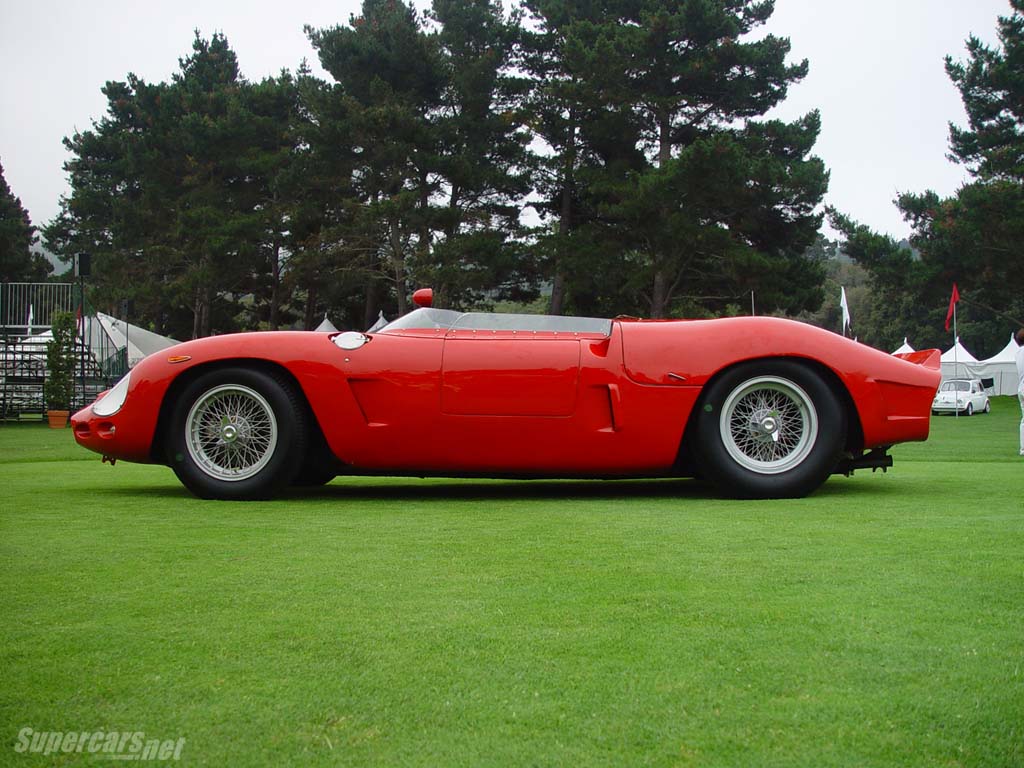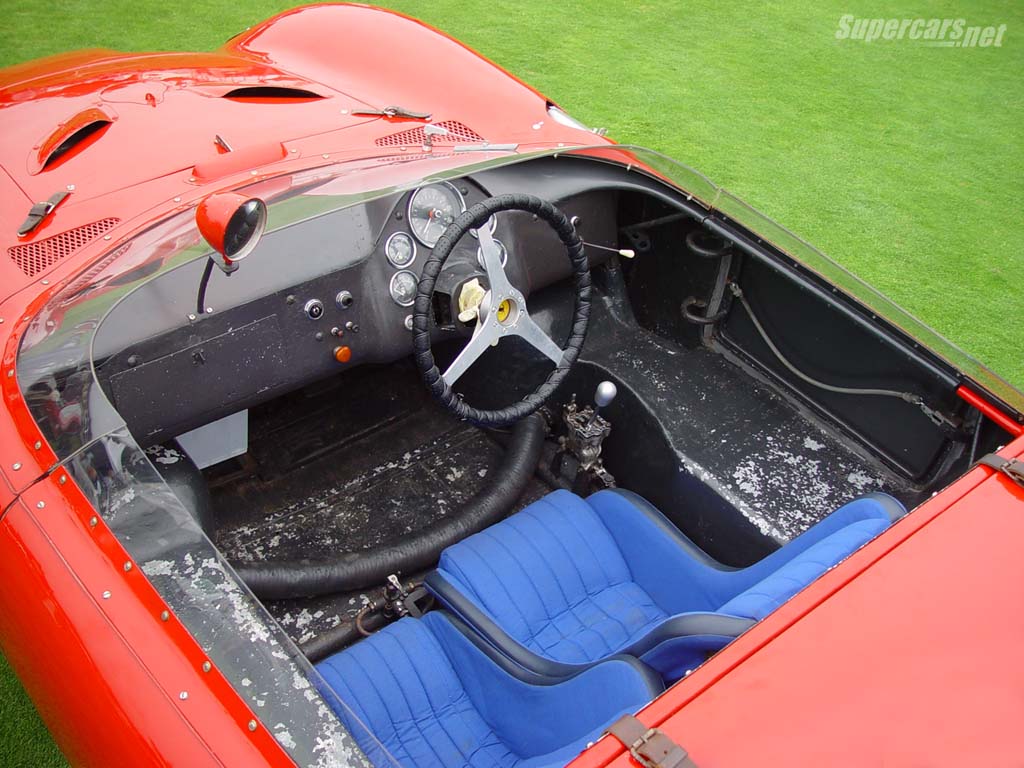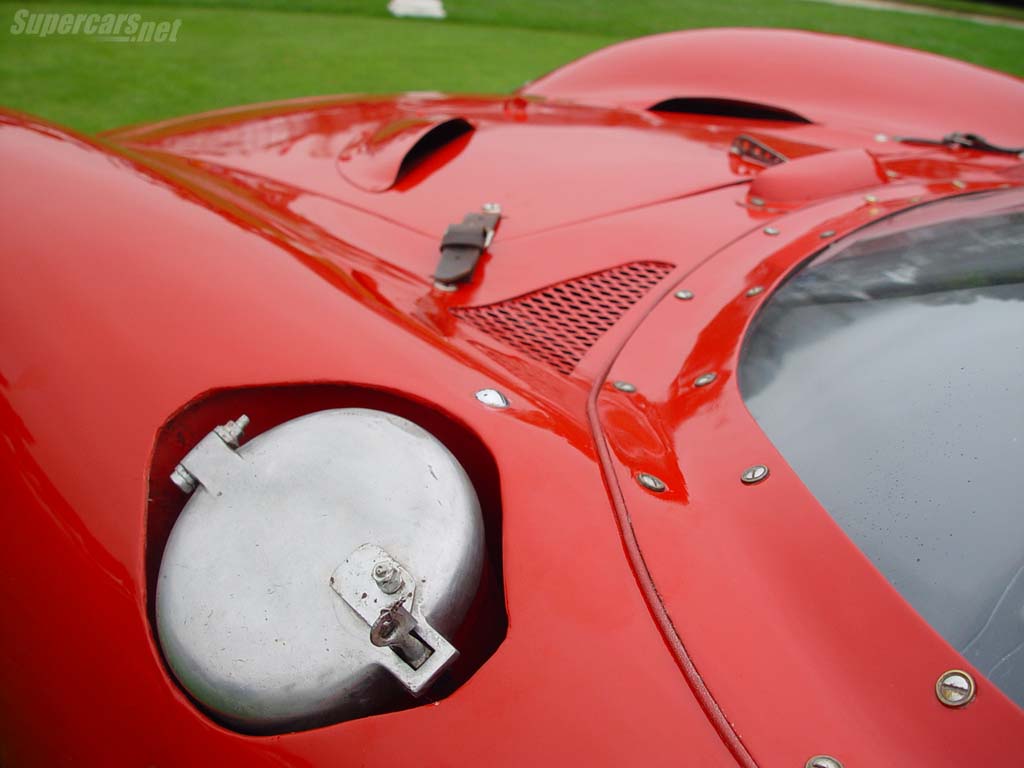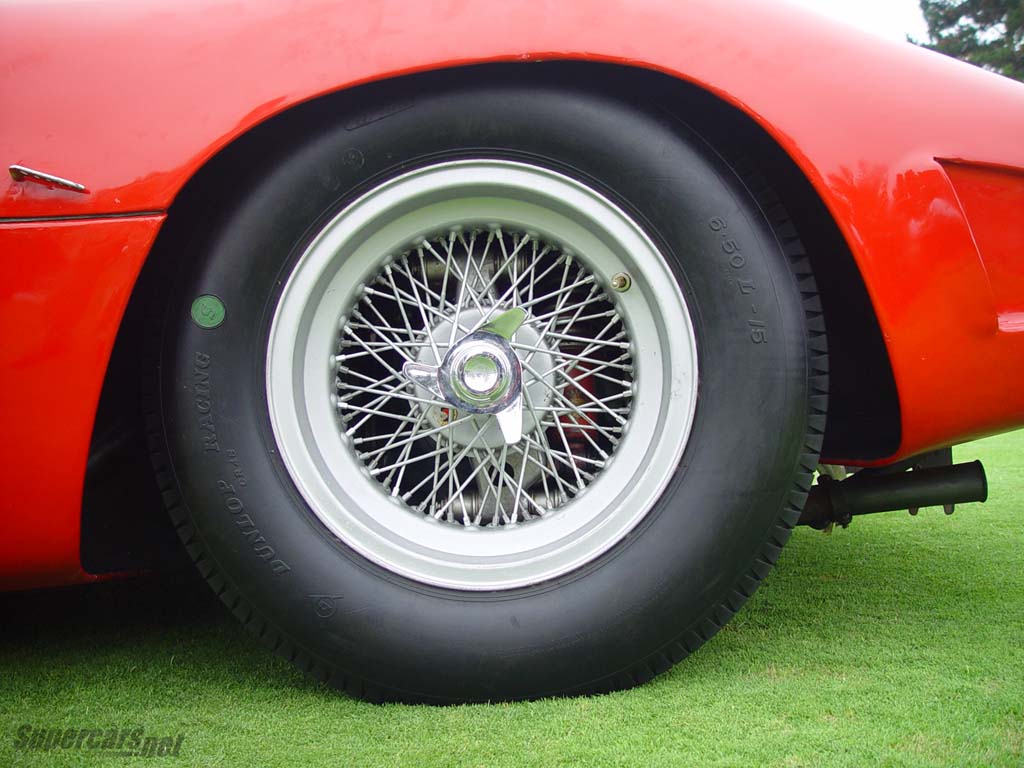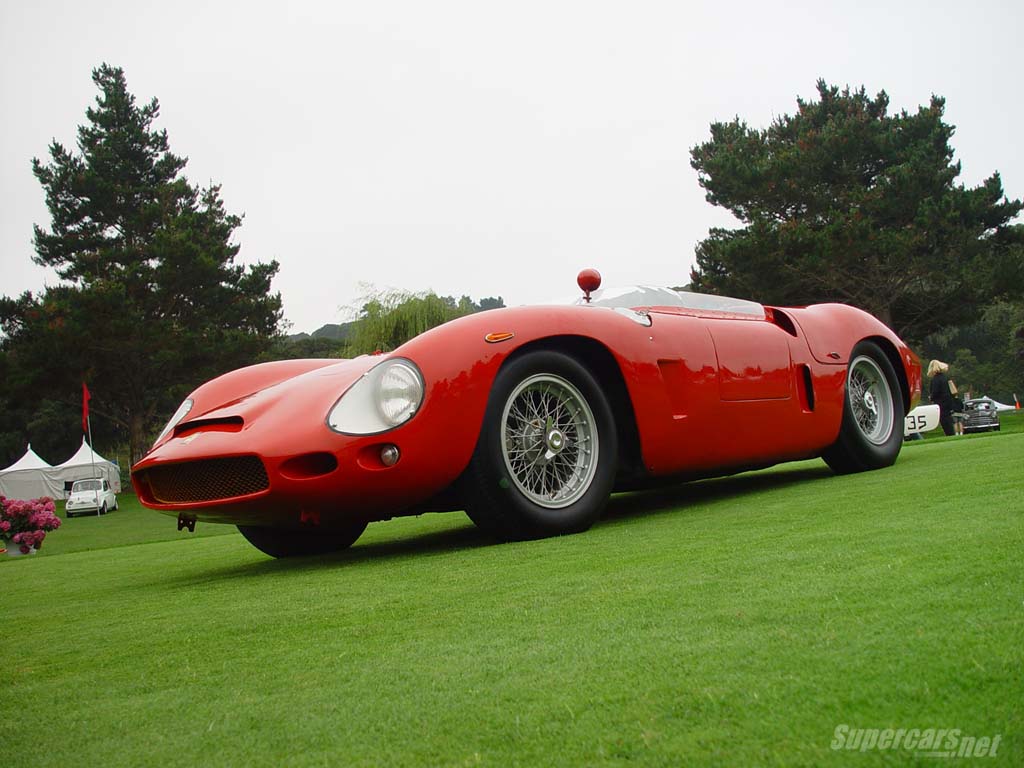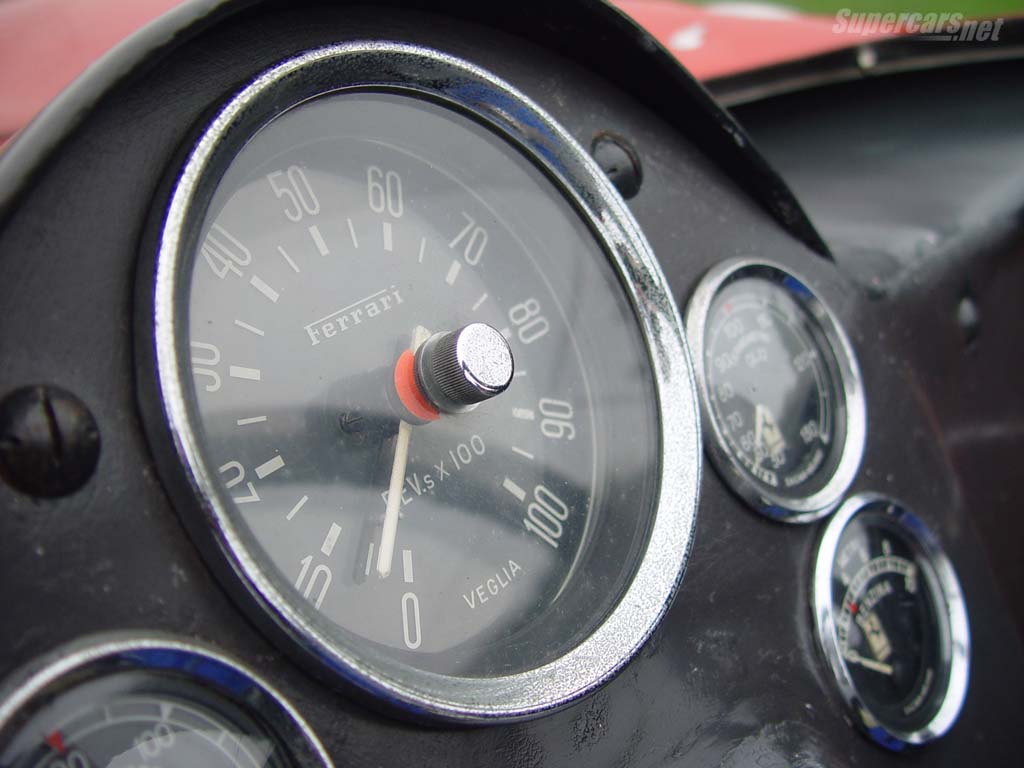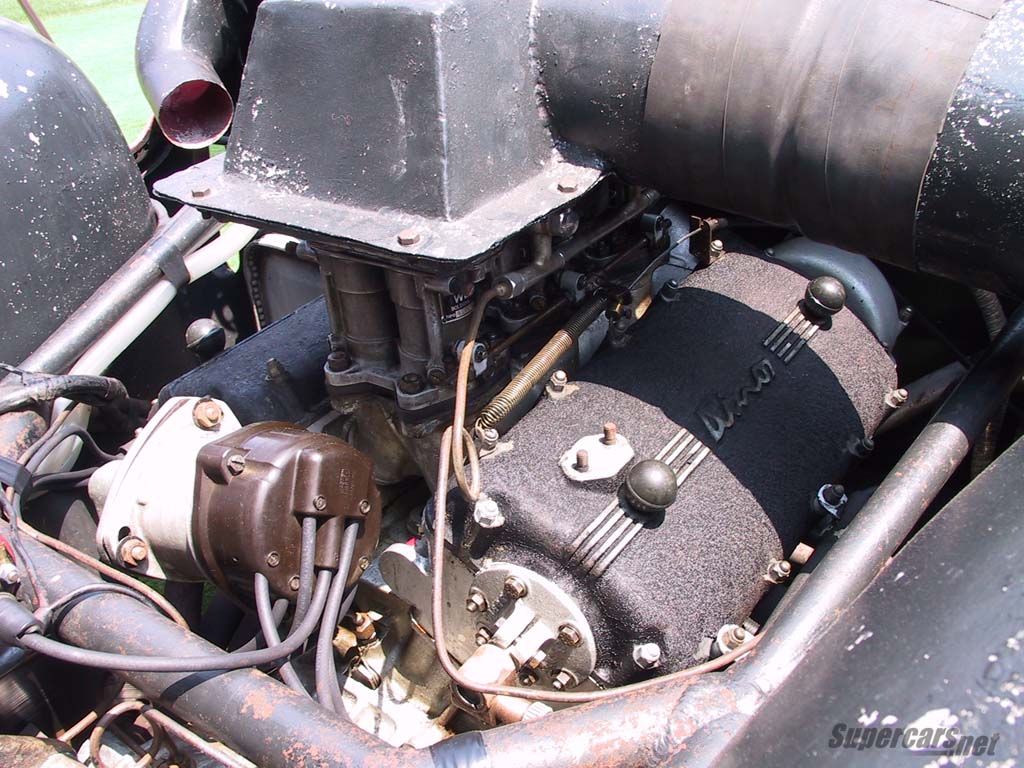1963 Ferrari 196 SP
During the late fifties, single seat racing was subject to an engineering revolution which all other forms of motorsport would follow. Specifically it was the 1958 Cooper Type 43 in hands of Stirling Moss which would motivate this revolution by beating the much more powerful Ferraris. The not-so-secret advantage was the Cooper’s engine layout. It placed the engine in behind the driver, in the rear of the car.
After the Cooper debuted and won at the 1958 Argentinean Grand Prix, it was Ferrari’s time to play catch up. It took two years until Ferrari debuted the 1960 version of the 246 which featured the Cooper’s engine layout. The two year gap may have seemed long, but changing from the tried and traditional path was not Enzo Ferrari’s way.
The most important individual responsible for adapting Ferrari to the mid-engine layout was Carlos Chiti. He not only convinced Enzo use rear-mounted engines in F1, but in his road cars as well. In spring of 1960, Chiti began working on these new cars. With the help of Richie Ginther, Chiti finished the 156 F1 and 246 SP. Both had rear-mounted engines and both were ready for the 1961 season.
An Engine Evolution
To avoid unnecessary risks, Chiti opted for a small engine to power his first rear-engine designs. A smaller unit helped ease the tight space required to fit the engine, transmission, transaxle and shift linkage between the rear wheels. Furthermore, having a lighter engine in the rear helped with the already doomed front-to-rear weight balance. Once the space and weight could be dealt with, then Chiti could move on the larger engines which would optimize engine capacity restrictions.
The first engine to power Ferrari’s new cars was the well tested Dino V6. This power plant was designed by Vittorio Jano and motivated by Enzo’s son, Alfredo Ferrari. It would power the F1 car in new 1.5 liter form and the Sports Prototype with a 2.4 liter version. During the 1961 season, this engine, in combination with Phil Hill, proved its worth by helping Ferrari win despite a new and rather bulky chassis design.
By 1962, Ferrari found a more ideal engine that was in between the heavy V12 and limited V6. This was Chiti’s own V8 which had been designed in 1961. This engine, together with a modified 246 SP chassis produced the 248 SP which was released on February 24th 1962. Later in the year these cars would become the 268 SP which had an increased capacity of 2644cc. In total less than 4 of Chiti’s V8 were ever made making it quite a rare piece.
196 SP #0790
As the 246, 248 and 268 models matured and were being replaced by cars such as the 250 P, most of the old mid-engine chassis received a Dino V6. With this setup the cars were sold to semipro drivers who ran the cars in two liter endurance and hill climb racing. #0790 was one such car.
Built as the initial 246, #0790 was Ferrari’s first sports car having a rear engine. The chassis was essentially a widened F1 unit having independent suspension on all four wheels. This design provided a basis for all sports prototypes to follow.
Chassis #0790 raced alongside #0796 in the 1961 season. The highlight of the 246’s racing career came when Oliver Gendebien and Wolfgang von Trips won the Targa Florio during #0790’s second race. During the second racing season, in 1962, Phil Hill and Gendebien took the overall victory In #0790 at the 1000kms Nurburgring with Rodriguez and Gendebien repeating the Targa Florio victory in #0796. These victories were an important step for Ferrari’s rear engine sports prototypes and paved the way for the 250P leading up to the 330 P4.
After 1963, the factory lost interest in the cars such as #0790 and sold them to private teams. It was during this period, when #0790 was bought and stored. Not until 2002 did the car surface at the 2002 Concorso Italiano. Amazingly, it appeared in original condition, being one of the few Ferrari Prototypes never to have a cosmetic restoration. As such, it received top honors later in year at the Cavallino Classic.
Conclusion
Among the 246, 248 and 268 prototypes, it is #0790 which still offers a unique look at an original Ferrari sports car. Chuck Wegner, #0790’s current owner, is setting a good example by sharing #0790 in its unrestored condition at vintage events around America. Receiving best in show at the 2002 Cavallino Classic promotes the ethic of preserving examples in their original state.
1963 Ferrari 196 SP Gallery
See full 1963 Ferrari 196 SP Gallery here
Ferrari 196 SP Specs & Performance
| submitted by | Richard Owen |
| type | Racing Car |
| built at | Maranello, Italy |
| engine | 60 Degree V6 |
| position | Mid-Longitudinal |
| aspiration | Natural |
| valvetrain | SOHC 2 Valves / Cyl |
| fuel feed | 3 Weber 42 DCN carburettors |
| displacement | 1983 cc / 121.0 in³ |
| bore | 71 mm / 2.8 in |
| stroke | 77 mm / 3.03 in |
| compression | 9.8:1 |
| power | 156.6 kw / 210 bhp @ 7500 rpm |
| specific output | 105.9 bhp per litre |
| bhp/weight | 323.08 bhp per tonne |
| body / frame | Aluminum Body over Tubular Steel Chassis |
| driven wheels | Rear Engine / RWD |
| front tires | 5.25-15 |
| rear tires | 6.50-15 |
| front brakes | Dunlop Discs |
| rear brakes | Dunlop Discs |
| f suspension | Wishbones w/Coil Springs |
| r suspension | Wishbones w/Coil Springs |
| curb weight | 650 kg / 1433 lbs |
| wheelbase | 2320 mm / 91.3 in |
| front track | 1240 mm / 48.8 in |
| rear track | 1200 mm / 47.2 in |
| transmission | 5-Speed Manual |





